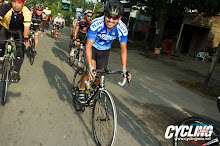Injury is the most common reason for runners ‘retiring’ from the sport, especially as far too many attempt to run through pain without thought for the consequences. Chronic injuries – that is, long-standing ones – are invariably more difficult to restore to full health, so it should go without saying that you need to take early active intervention.
Acute injury is associated with local bleeding and that the object of first aid is to minimise this bleeding and reduce its consequences. The acronym ‘RICE’ is commonly used as an aide mémoire.
R stands for Rest – common sense, really, but a runner in the middle of a race or training session may not heed the symptoms of a less severe injury and just carry on. There may be some excuse, as exercise-induced endorphins can reduce the brain’s ability to interpret symptoms of injury, though the more experienced you are as a runner, the more intuitive you should be in interpreting these. Continuing to run will force more blood to the site of the injury and maintain bleeding – more severe damage is the inevitable result. If you have no option but to carry on, try to cool the area with water and slow right down – walking is ideal.
I stands for Ice – the application of which should be carefully controlled. Simply putting ice on the site of an injury is going to produce blistering and ice burn, so it should be wrapped in polythene, crushed and further wrapped in a damp tea towel. Time is an important factor. Fifteen minutes should be the upper limit for a single application, but this can be repeated hourly.
You can use ice in other ways during rehabilitation. Firstly, you should reapply it if you feel twinges as you gently stretch out the injury on the subsequent days, and it can also be used as a massage medium which can ease apart scarred, healing tissues while the cooling effect continues to provide capilliary contraction and prevent further bleeding. Ice is the most valuable, yet least used and understood, method of healing sports injuries.
C is for Compression, or at least counter-pressure to the bleeding capilliaries. The greater the pressure applied, the lower the amount of blood that can pass to the rest of the limb. We all apply tissues to an external cut – a bandage or Tubi-grip will have the same effect internally. However, this pressure should be less than your blood pressure – there is little point in stopping the bleeding but cutting off the blood supply to the extremity of a limb. Gangrene can still occur, so you should alternate compression with ice. If the limb goes numb, the bandaging should be released.
E reminds us to Elevate the limb. Blood pressure reduces with height – it is lower in our brain than our toes – so the higher the limb is above the heart, the less force there is within the damaged blood vessel to cause bleeding and worsen the injury. While it may not always be practical to elevate the limb, any time doing so is well spent and will aid recovery.
The RICE method (combined with anti-inflammatory drugs if desired) is the best immediate response to most injuries. Full rehabilitation requires considerable expertise, however, and we will give more details next month
Tuesday, May 19, 2009
Subscribe to:
Post Comments (Atom)


No comments:
Post a Comment